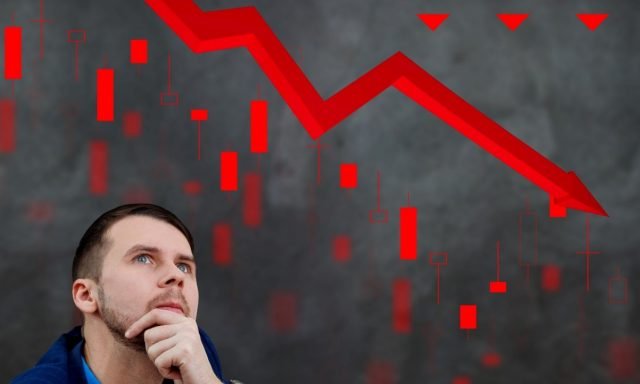
“Red Flags in the Labor Market: How Tariffs and Economic Instability Are Reshaping American Employment in 2025”
Introduction: A Subtle Signal or an Ominous Warning?
Last week, a single number raised eyebrows across economic circles: 247,000. That’s how many Americans filed for unemployment benefits—the highest in eight months. While still within a range considered historically low, the uptick is hard to ignore. It arrives amid a flurry of troubling economic signals: wavering corporate confidence, unexpected layoffs, shrinking GDP, and a job market that feels less stable by the day.
But this number doesn’t stand alone. It’s part of a mosaic of economic disruption, where the threads of uncertainty lead back to a common source: the reemergence of protectionist tariff policies under President Trump’s second term. As trade disputes intensify and businesses brace for unpredictable policy turns, the American labor market has begun to absorb the first real shocks of what may become a prolonged period of contraction and dislocation.
The Tariff Domino Effect: Corporate Confidence Erodes
At the center of this unfolding drama are the tariffs—once criticized, now expanded. President Trump’s latest announcements on import duties, particularly those aimed at Chinese electronics, European auto parts, and Latin American agriculture, have introduced a new layer of instability into corporate planning. Multinational firms that operate across borders are caught in a game of economic whack-a-mole, responding to each new announcement with strategic delays, layoffs, or operational downsizing.
Companies like Procter & Gamble, Workday, and Dow have all announced substantial job cuts in 2025. While some cite automation and cost-cutting, internal reports suggest another, more immediate reason: global supply chain uncertainty and demand disruption, spurred by pre-emptive bulk importing and retaliatory foreign tariffs. “You can’t plan when the rules change every week,” said a senior executive from a major U.S. manufacturer, speaking anonymously.
For smaller companies, particularly in Florida’s import/export-dependent economy, the impact is even more acute. A Miami-based logistics firm told Miami City Report that container orders from Asia have dropped 17% since February. “Every time a tariff is floated or confirmed, our customers panic,” said the firm’s VP of Operations. “Some just stop ordering altogether.”
Job Market: Cracks Beneath the Surface
On the surface, April showed an increase in job openings—a signal often interpreted as economic resilience. But a deeper look reveals a contradictory trend: fewer Americans are voluntarily quitting their jobs, a sign of weakening confidence in the labor market. As workers perceive higher risk in job-hopping, they hold tight to what they have, even if unsatisfied. Meanwhile, layoffs are quietly ticking up, and the total number of job cuts in major U.S. companies has exceeded 400,000 in the first five months of 2025.
What we’re seeing is a shift in labor sentiment—a subtle but significant transformation. In 2023 and 2024, workers felt emboldened, spurred on by a tight market and rising wages. That energy has now dissipated. The labor market in 2025 feels different: cautious, muted, and apprehensive.
Economic Growth Slows as Import Surge Backfires
The U.S. economy shrank by 0.2% in Q1 2025, a small but symbolic contraction. Economists attribute part of this to a sudden surge in imports during Q4 2024, as businesses rushed to stockpile goods ahead of anticipated tariff hikes. But instead of preparing firms for smoother operations, the rush only intensified warehouse surpluses and disrupted financial projections.
“The logic was: buy now before prices go up,” explained trade economist Dr. Alicia Rivera of Florida International University. “But when you over-order and demand slows, you’re left with bloated inventories and no margin for adjustment. It’s a classic overreaction to erratic policy.”
This “import bulge,” as it’s been termed, has also had a ripple effect on ports and local economies. In South Florida, warehouse labor demand soared in January—only to collapse by March, resulting in hundreds of temporary job losses in Miami-Dade alone.
Federal Reserve: Between a Rock and a Hard Place
The Federal Reserve’s interest rate remains at 4.3% for the third consecutive meeting—a decision framed as cautionary. With inflation still lurking and unemployment risks rising, the Fed is essentially paralyzed. Lowering rates could stoke inflation; raising them might accelerate layoffs.
In a recent statement, Fed Chair Lisa Nunn warned that the “dual threat of inflationary resurgence and labor market deterioration requires calibrated inaction.” In translation: we’re not sure which problem to prioritize. This indecision has left markets uneasy and businesses stuck in strategic limbo.
The Political Cost of Economic Instability
President Trump’s administration, returning with a more aggressive economic stance, is finding that campaign slogans are colliding with practical fallout. “America First” tariffs are creating precisely the kinds of disruptions that hurt the very voters Trump once promised to protect: blue-collar workers, logistics drivers, and retail staff.
Internal White House memos leaked to Miami City Report reveal growing concern about suburban and Rust Belt voters—especially in battleground states like Pennsylvania and Michigan—who are seeing layoffs in sectors that previously benefited from stable trade policies.
Unemployment Benefits: A Mixed Signal
Interestingly, the total number of Americans receiving unemployment benefits has slightly declined, settling at 1.9 million for the week ending May 24. While this may seem like a positive sign, analysts warn that it could reflect benefit exhaustion, underreporting, or shifts to gig work, rather than actual labor market recovery.
“Our data shows that many laid-off workers are turning to informal or contract jobs while looking for stability,” said labor analyst Monica Klein. “The gig economy may absorb shock in the short term, but it masks the fragility underneath.”
Outlook for May: Slower Hiring Ahead
The Labor Department’s upcoming report is expected to show a modest gain of 130,000 jobs in May—well below pre-pandemic averages. This reflects a broader slowdown in hiring, especially in sectors like manufacturing, transportation, and retail. With summer approaching and consumer demand facing inflationary headwinds, hiring managers are hesitant to expand payrolls.
Florida’s local governments have also begun to freeze new positions or delay public hiring initiatives, citing lower-than-expected sales tax revenues and increased operational costs tied to fuel and goods.
Personal Stories: Behind the Statistics
Consider Rosa Martinez, a warehouse supervisor in Hialeah, who was laid off in April after her employer lost two major import clients. “I’ve never been on unemployment before,” she said. “I’ve worked since I was 17. Now I wait for calls that never come.”
Her story is echoed across the state and country. While federal economists speak in metrics and models, Americans like Rosa experience policy changes as blunt disruptions. The shifting tide of tariffs isn’t just altering spreadsheets—it’s reordering lives.
A System Under Strain
The rise in unemployment claims is not yet a crisis—but it is a warning. Combined with rising layoffs, shrinking growth, and widespread business uncertainty, it signals a turning point. The economic experiment unfolding in 2025—characterized by trade isolation, supply chain shocks, and unpredictable regulation—is beginning to wear down confidence.
As always, it is the everyday worker who bears the cost first.
In the coming months, the question won’t just be “How many jobs were added?” but “What kind of economy are we building?” Will it reward stability, long-term growth, and equitable opportunity—or will it keep chasing protectionist headlines, while ordinary Americans pay the price?
For Rosa and millions like her, the answer can’t come soon enough.
Trump tariffs 2025, U.S. job cuts 2025, economic slowdown Q1 2025, labor market instability, unemployment benefits rise
TrumpTariffs, #Unemployment2025, #JobCuts, #EconomicSlowdown, #MiamiCityReport

